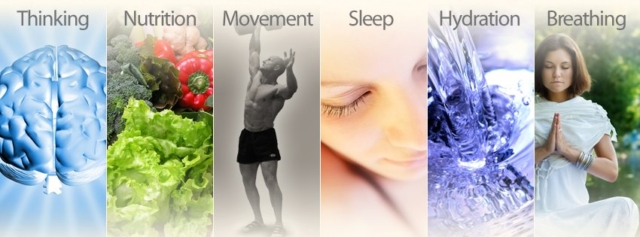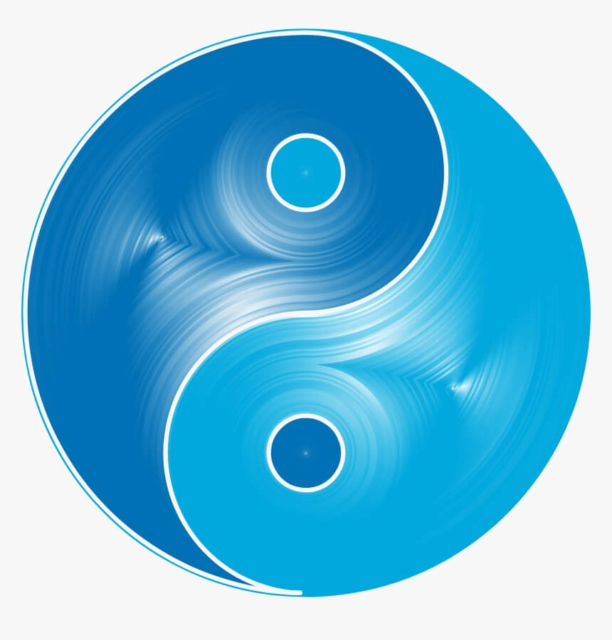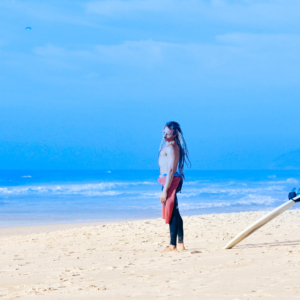Pagas por jugar; ésa es la importancia de la recuperación de las sesiones de surf .
Todo son entradas y salidas. El yin yang de la vida.
Esto resuena con una sonoridad y una claridad excepcionales a medida que los años siguen pasando y una vida bien vivida acumula sus heridas y sus achaques.
Hablo de esto a menudo con los clientes con los que trabajo de forma individual. Mi esperanza es hacerles comprender que a medida que la vida avanza, a medida que nos hacemos más conscientes de nuestras capacidades, y desarrollamos claridad con lo que nos hace felices. Con esta sabiduría madura, a menudo tenemos que ser más "selectivos" con cómo y dónde lanzamos esfuerzos atléticos.
En mi caso, me inclino por el surf.
Ya no me interesa hacer press de banca pesado.
Si nunca corre un maratón, no podría importarme menos.
Particularmente no quiero romperme una clavícula o dislocarme un hombro con el ciclismo de montaña todoterreno.
Lo que quiero es que me den caña. Quiero remar durante una sesión de 3 horas y sentirme bien durante la mayor parte de la sesión. Quiero cobrar más surf. Y quiero seguir haciendo esto durante años.
Esto requiere esfuerzo. Esto exige el mantenimiento de tu cuerpo. Esto exige que comprendas la asociación implícita de tu SALUD y que comprende la base subyacente de tu capacidad para surf.

Cuando digo salud, me refiero a tu capacidad física general y a tu habilidad para interactuar con la vida. Tus articulaciones, capacidades cognitivas, nutrición, respiración. Tu interacción con el movimiento. Y tu salud mental y emocional. La SALUD es un compuesto de múltiples variables y de los numerosos sistemas que hacen que tu cuerpo funcione.
CÓMO SURF PARA SIEMPRE - LA SALUD ES TU SURF
Ahora que ya lo sabe, pasemos a la Recuperación.
El aspecto de cuidar tu cuerpo. Ayudarle a funcionar de forma óptima. Asegurarte de que puedes moverte bien y sin dolor. De nutrir tu cuerpo, en lugar de agotarlo siempre.
Lo que sigue son varios aspectos de la recuperación que yo utilizo, que mis clientes utilizan y que creo que usted debería utilizar o al menos conocer.
MÉTODOS DE RECUPERACIÓN TRAS LA SESIÓN SURF
Todo se reduce al equilibrio y, por desgracia, la mayoría de la gente no está equilibrada.
La vida moderna nos ha llevado a esperar, exigir y forzar el rendimiento en todo momento. Hacer más, entrenar más duro, trabajar más, dormir menos, no pain no gain, go hard or go home.....
Si nos fijamos en el estadounidense medio, creo que las premisas generales de lo que constituye y apoya la salud no están funcionando.
El enfoque de David Goggins no funciona para la mayoría de la gente. Me encanta su fortaleza mental, pero su enfoque físico diezmaría a la mayoría de los individuos medios.
Podría despotricar sobre esto durante ensayos de contenido, pero intentaré simplificarlo en un párrafo.
En la juventud, por lo general, puedes ir a por todas y sufrir consecuencias mínimas. Los perfiles hormonales están de tu lado. No tienes décadas de lesiones o cirugías. 30 años de mala alimentación aún no han causado estragos en tu sistema digestivo, compensando así todos los demás sistemas. Sigues siendo más como un gran camión diesel viejo, impulsándote por la vida con ingenuidad juvenil. Épico, ¡es divertido! Yo hice todas esas cosas, y ahora he tenido que aprender la lección a mis 30 años.

La clave de la longevidad y de sentirse bien es el EQUILIBRIO.
Comprender el gasto energético y asegurarnos de que tenemos más aporte energético. Si quiero entrenar y surf duro, necesito dormir bien y comer bien. Si quiero correr en surf durante 3 horas, tendré que recuperarme al llegar a casa, porque tengo una larga lista de lesiones que, si las descuido, me causarán dolorosas molestias. Tengo que convertirme en un participante activo en mi salud y darme cuenta de que la salud no es sólo una clase de HITT de 30 minutos dos veces por semana.
Salud es cuidar tu nutrición y alimentarte adecuadamente.
¡Qué revelación! La salud es intentar nutrir el cuerpo a través del movimiento, la respiración y los pensamientos. Es tener conciencia de uno mismo e intentar moderar nuestros factores de estrés y tomar decisiones óptimas en nuestro camino por la vida.
La salud es un intento de apoyar nuestra fisiología, así como nuestros estados mentales y emocionales.
Equilibra los factores estresantes de la vida. Entrena hoy, descansa mañana. Esta premisa puede aplicarse a cualquier aspecto de la vida.
Surf duro esta mañana, luego comer bien, hacer algunos estiramientos suaves, y un poco de trabajo suave de los tejidos.
El trabajo de recuperación es una gran caja de herramientas. Las herramientas específicas dependen de ti. Podrían ser saunas, baños fríos, sentarse al sol, comer buena comida, aceite de CBD, curcumina, baños de magnesio, Theragun, trabajo de tejidos con pelotas de tenis, escuchar música...... La lista es potencialmente interminable. Haz cosas que apoyen la salud, apoyen la fisiología y ayuden a reducir el SNC (sistema nervioso central) a un estado de relajación más parasimpático.
He aquí algunos métodos de recuperación orientados físicamente que empleo personalmente.
Todo esto se extrae del PROGRAMA PARA ATLETAS BODYWEIGHT SURF . Es un programa épico que lo abarca todo, realmente deberías echarle un vistazo. Va a cambiar su enfoque de la salud, la aptitud, la formación, y la forma de apoyar activamente su surf.
SURF RECUPERACIÓN DE LA SESIÓN: TRABAJO DE LOS TEJIDOS
No voy a entrar en la fisiología de lo que ocurre a nivel tisular, ni en cómo se modula el SNC y se altera el tono inducido por el cerebro en el tejido muscular. Jerga de grandes palabras....
Sienta bien y te ayudará a sentirte bien en surf.
Estas son algunas de las áreas a las que recurro a menudo, y pido a mis clientes que hagan lo mismo.
AMOR DE ESPALDA BAJA
CADERAS SUELTAS Y FLUIDAS - TEJIDO LATERAL DE LA CADERA
SHOULDER LOVE - LAT & TRICEPS
Este tipo de trabajo tisular debe utilizarse cuando sea necesario. Cualquiera que practique surf debería saber cómo rodar sobre una pelota de tenis y liberar el cuello y los hombros después de un surf intenso. También debería ser consciente de liberar el tejido lateral de la cadera para descomprimir la cabeza femoral en el acetábulo (cavidad de la cadera) y aumentar la amplitud de movimiento. Este tipo de ejercicios podrían aplicarse a la mayor parte del cuerpo.
Tienes un cuerpo, y parte de esa responsabilidad de propiedad es saber cómo liberar fácil y eficazmente algunos tejidos con una pelota de tenis.
RECUPERACIÓN POST SURF : ESTIRAMIENTOS PARA SURFISTAS
Estiramientos, los métodos, los detalles, y los efectos fisiológicos es un volumen de trabajo. Esto no va a ser así, ya que los detalles siguen siendo discutidos, debatidos, estudiados, y no se necesitan todos esos detalles.
Lo que sí debes saber es que el movimiento es bueno.
El movimiento es tu capacidad para... bueno, moverte. ¡Pensamientos profundos!
No pretendo detallar aspectos específicos de los tejidos o las articulaciones, pero quiero insistir en que sería importante que conocieras algunos estiramientos que le sientan bien a TU cuerpo.
Lo que sigue son más bien "movimientos" y "movilizaciones". Lo que esto implica es que estas posturas incorporan el movimiento de las articulaciones a través de una amplitud de movimiento. Aunque no se intente alargar específicamente el tejido, sí se busca moverlo.
En última instancia, depende de ti determinar lo que te hace sentir bien y funciona para tu cuerpo. Mi única esperanza es enseñarte algunos movimientos que son fisiológicamente eficaces, y que han tenido resultados prometedores con mis clientes.
Si este tipo de movimiento, el trabajo de recuperación y el trabajo de los tejidos es algo que te interesa aprender y aplicar, te recomiendo encarecidamente que eches un vistazo al Programa para Atletas de Bodyweight Surf .
SEGMENTAL CAT COW - SPINE LOVE
CADERAS QUE GIRAN
UNO DE MIS ESTIRAMIENTOS FAVORITOS: RODAR POR EL SUELO
OTRO FAVORITO - EL PRETZEL BRETTZEL
POSE INFANTIL - YA SABÍAS QUE ESTO ENTRARÍA EN LA LISTA, PERO INVOLUCREMOS A LOS LAT.
PISTOLAS DE MASAJE - SE SIENTEN TAN BIEN - POST SURF RECOVERY
Enciéndelo y ponte a trabajar.
Los únicos inconvenientes son: 1) no puedes ni debes usarlo en el cuello, 2) no puedes hacerlo en la espalda, que es realmente donde la mayoría de los surfistas quieren un tratamiento.
Convence a tu pareja para un intercambio de 5 minutos de amor muscular Theragun.
Aquí tienes más información sobre el uso de una pistola de masaje y un poco de amor por las pelotas de tenis para los hombros que acaban de remar durante unas horas.
THERACANE - MOSTRAR EL CUELLO UN POCO DE AMOR EN ESE POST SURF SESIÓN DE RECUPERACIÓN
Puede parecer un juguete sexual, pero no lo es del todo. Pero podría ser tu mejor amigo en un viaje a surf .
Aparte de recibir las manos de un terapeuta manual cualificado en el cuello, esto es lo más parecido.
En este vídeo entro en algunos detalles específicos, pero el proceso completo se encuentra en el programa Bodyweight Surf Athlete y en los programas de la Ocean Sports Academy.
La clave está en conocer y familiarizarse con un par de partes de la anatomía, y a partir de ahí se puede autotratar con precisión el tejido de la columna cervical posterior... ¡la nuca!
Ver esta publicación en Instagram
¿QUÉ HAY DE LOS SUPLEMENTOS PARA LA ENERGÍA O LA RECUPERACIÓN DE LAS SESIONES DE SURF ?
Esto se convertiría en una lista exhaustiva y un proceso inútil para mí. A medida que me he hecho mayor y he salido del agujero de gusano que es la nutrición, he vuelto en gran medida a lo básico de lo que funciona.
El primer puerto de escala para la recuperación es la hidratación. Beba agua limpia de alta calidad. Recomiendo a todos mis clientes que inviertan en un filtro de agua de calidad para su casa y que beban volúmenes de agua adecuados para su peso corporal y su rendimiento energético. Simple.... beber agua.
Junto con la hidratación vienen los fundamentos de la reposición de electrolitos.
El sodio, el potasio y el magnesio son los más importantes. La sal de buena calidad, una pizca o más en un litro de agua después de un surf pesado puede ser una cosa beneficiosa a considerar. La adición de potasio a través de alguna marca de sustituto de la sal, como Morton's No-salt, que es esencialmente cloruro de potasio, también puede añadirse al agua.
Lo ideal es consumir potasio a través de alimentos integrales, siendo la fruta una buena fuente de potasio, con diferentes cantidades de potasio por ración. La mayoría de las personas con las que hago consultas nutricionales tienen una ingesta de potasio dramáticamente baja, por lo que esto es algo que se puede medir fácilmente y tener en cuenta. Magnesio, es muy probable que necesite más, y este electrolito está implicado en numerosas y críticas funciones biológicas. Hable con su médico de cabecera sobre la ingesta adecuada de magnesio a partir de alimentos integrales y considere la posibilidad de tomar suplementos.
En cuanto a la nutrición...
Ni siquiera voy a entrar ahí. Es un enorme agujero negro de información y confusión dogmática. Come ALIMENTOS REALES, y averigua qué proporciones de macronutrientes funcionan para tu cuerpo.
En cuanto a los suplementos. Lo que voy a hacer es escupir de la parte superior de mi cabeza las cosas que he encontrado para ser útil en el mantenimiento de mis niveles de energía, la recuperación, y simplemente sentirse bien en el agua.
Bisglicinato de magnesio, CBD, gel de árnica flora, curcumina, NAD+, complejo B, aceite MCT, cafeína, aminoácidos esenciales, creatina, colágeno en polvo, raíz de remolacha en polvo... y eso es lo que me viene inmediatamente a la mente.
Si tienes algún protocolo específico de suplementos que te haya resultado útil, coméntalo a continuación.
Para terminar, ¡cuídate!
Un poco de autocuidado puede marcar una diferencia tremenda cuando hablamos de décadas.
Masajear la cadera con un balón durante un día no cambia mucho. Masajear una cadera con un balón de forma constante a lo largo del tiempo podría hacer grandes cosas. Esa mentalidad se puede aplicar a todo lo que he mencionado en este post.
Consistencia es el nombre del juego aquí. Aplicar de forma consistente inputs positivos a tu cuerpo y entender que le estás pidiendo mucho a tu cuerpo en términos de surf y de surf durante décadas.
Espero que esto te ayude y te dé unas cuantas herramientas para añadir a tu caja de herramientas de salud, longevidad y surf.





Comentario